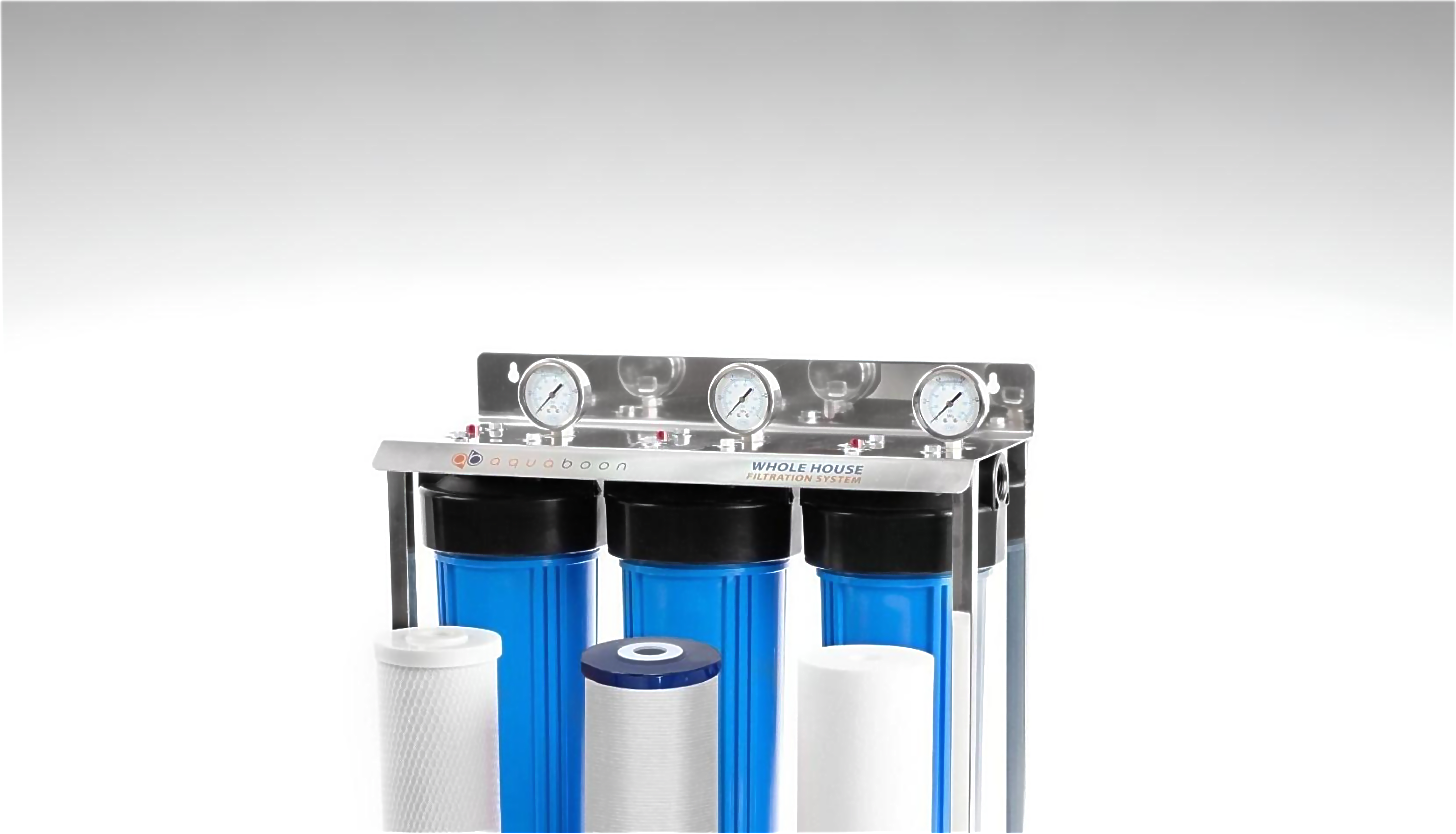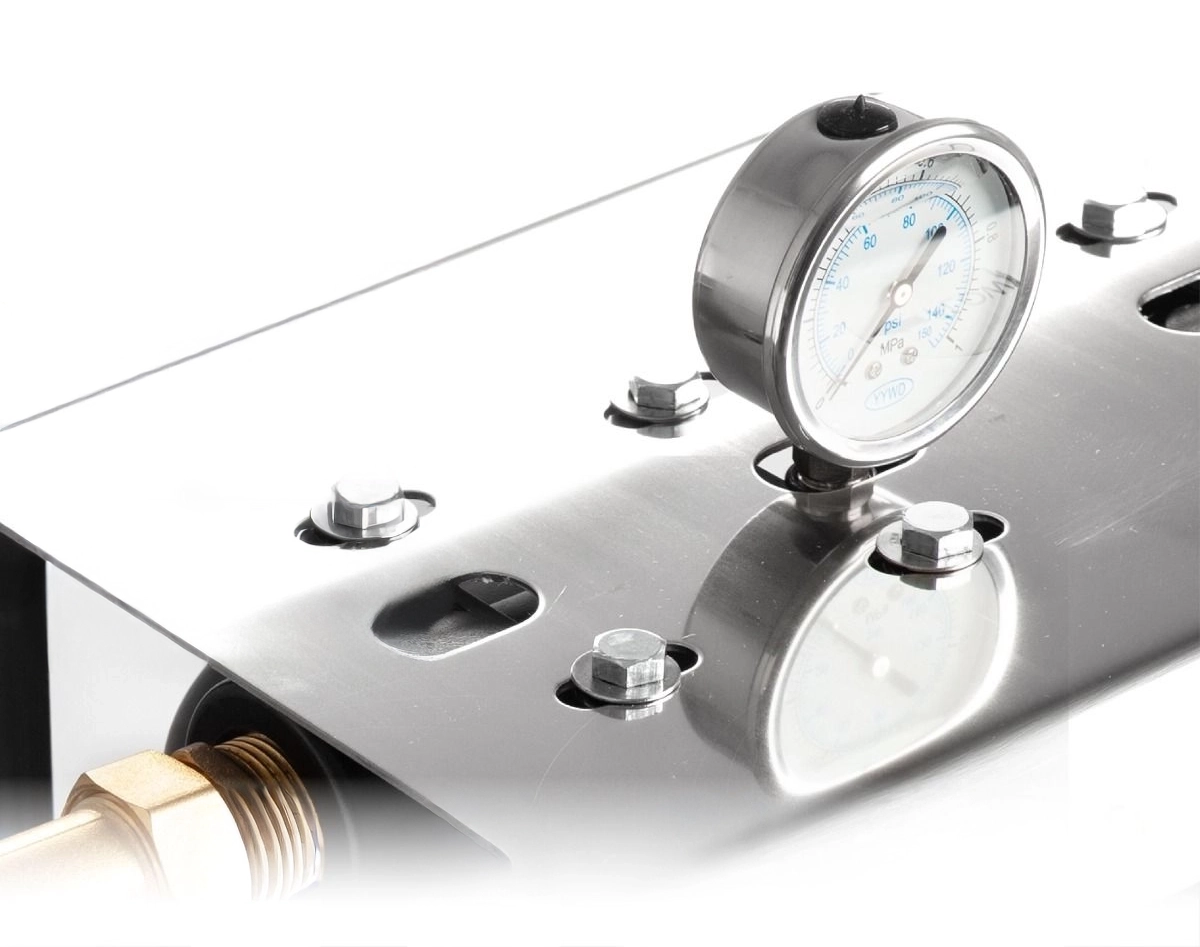Monitoring Filter Life with Pressure Gauges:
A Practical Guide
When it comes to home water filtration, most people focus on filter cartridges - the parts you can see and replace. But one small, often-overlooked component determines how well your entire system performs: the pressure gauge.
Pressure gauges might not look like much, but they’re the eyes of your filtration setup. They show you what’s happening inside your system — whether your filters are clean or clogged, whether pressure is stable or dangerously high, and when maintenance is due. Understanding how to read and use them can save money, extend your system’s lifespan, and ensure your home always has clean, consistent water flow.
Why Water Pressure Matters
Water pressure affects everything in your plumbing system — from the way water flows through your filters to how your appliances perform. If pressure is too high, it can damage filter housings, fittings, and even household pipes. If it’s too low, water can barely make it through your filters, reducing efficiency and flow.
Most filtration systems operate best between 50 and 60 psi, with anything above 80 psi considered excessive. Below 40 psi, filters may clog faster or fail to filter water effectively. The problem is, you can’t see water pressure. You can’t hear it. The only way to know what’s happening is with a gauge that tells you in real time.
A properly installed pressure gauge helps you maintain balance — not too high, not too low — and ensures your system operates exactly as designed.
Pressure Gauge or Pressure Regulator?
Many homeowners confuse pressure gauges with pressure regulators. Both are related to water pressure, but they serve completely different purposes.
A pressure regulator controls water pressure. It’s a valve that reduces high incoming pressure from the city supply or well pump and keeps it steady at a safe level. Without it, your filtration system could experience damaging spikes.
A pressure gauge, on the other hand, doesn’t control anything — it measures. It simply tells you how much pressure is flowing through your system at a specific point. Think of it as a thermometer for your water system: it doesn’t lower the temperature, but it lets you know when something isn’t normal.
The best systems use both. The regulator maintains stability, while the gauge keeps you informed.
How Pressure Gauges Work
A pressure gauge measures the force of water flowing through your pipes. Inside the gauge, a small spring or diaphragm moves as pressure changes, which in turn moves the needle on the dial. The number it points to shows how much pressure your system is experiencing, usually measured in pounds per square inch (psi).
Some filtration systems have just one gauge — typically placed before the filters to show incoming pressure. But more advanced systems, like multi-stage whole house setups, use two or three gauges to give a more complete picture.
One gauge shows inlet pressure, the water coming from your main line. Another shows outlet pressure, the water after filtration. A third gauge, often placed between filter housings, helps identify where a pressure drop occurs — a sign that a specific filter is clogging.
These readings make it possible to maintain performance without guesswork.
Understanding the Readings
Once you learn what your gauges are telling you, maintaining your system becomes simple. For example, if your inlet gauge reads 60 psi and your outlet gauge reads 58 psi, everything’s normal — that’s just a small, healthy loss as water passes through the filters.
But if that difference grows — say, 60 psi at the inlet and 45 psi at the outlet — it means your filters are starting to clog. A difference of 15 to 20 psi or more is usually the signal that it’s time for a replacement.
When you have gauges between filter stages, you can pinpoint the exact filter that’s creating the problem. If pressure drops sharply after the sediment stage, that cartridge is likely full and restricting flow. This kind of monitoring turns filter replacement from guesswork into a precise, data-based decision.
Where Gauges Should Be Installed
To get accurate readings, pressure gauges need to be installed in the right places. The most effective setup includes one gauge before the first filter housing, one between stages, and one after the final filter.
The inlet gauge shows you the pressure coming into your system — often from a municipal line or well. The middle gauge helps you see how much resistance is created by each filter stage. The outlet gauge shows you the final pressure that goes into your home’s plumbing.
Even if you only install a single gauge, place it before the system to monitor the inlet pressure. It’s the best indicator of whether your water supply is stable or if a regulator might be needed. For larger homes or systems with multiple stages, adding more gauges gives you clearer insight into performance over time.
How Gauges Save You Money
Many people replace filters on a set schedule — every six or twelve months — without realizing that filter lifespan can vary dramatically depending on water quality. If your water is relatively clean, filters may last much longer. If it’s full of sediment or iron, they may clog much sooner.
A pressure gauge removes that uncertainty. Instead of replacing filters too early or waiting until the flow slows down, you can watch for actual pressure drops that show when filters are nearing their limit. This means you get the most life from each cartridge while keeping your water clean and pressure consistent.
Over time, that translates into lower maintenance costs and fewer surprises. You’ll know your filters are being changed because they need it — not just because the calendar says so.
Keeping Gauges Accurate
Pressure gauges are built to last, but they still need occasional attention. Check the readings monthly under normal water use. If you notice fogging or condensation inside the lens, it may be time to replace the gauge. When no water is running, the needle should rest close to zero — if it doesn’t, it may be worn out or stuck.
During filter changes, take a moment to clean the connections and ensure the gauge is still secure. Over time, minerals or debris can affect accuracy. A good quality gauge can last for years, but regular checks ensure it continues to give you trustworthy readings.
When You Need Pressure Monitoring
Certain signs indicate that your home could benefit from pressure gauges. If your water flow suddenly drops, if you hear banging or “water hammer” noises in your pipes, or if you notice frequent leaks around filter housings, chances are your system is experiencing pressure fluctuations.
If filters seem to clog too quickly or if some faucets have stronger flow than others, inconsistent pressure might be to blame. In each case, a gauge helps identify the cause instantly — saving hours of troubleshooting and unnecessary repairs.
Why Choose Filterway
Once you understand how vital pressure monitoring is, choosing the right equipment becomes easy. That’s where Filterway makes a difference.
Filterway pressure gauges are designed for precision and durability. Built with corrosion-resistant components and sealed lenses, they provide accurate readings without fogging or sticking. These gauges are easy to install, simple to read, and compatible with most residential filtration systems.
Many Filterway whole house filtration systems include pre-installed gauge ports or come equipped with triple-gauge configurations. This makes it easy to see inlet, middle, and outlet pressure at a glance, ensuring your system always runs at its best.
Triple pressure gauge setup on a Filterway whole house filtration system lets you pinpoint pressure drops across each filtration stage.
Because the gauges are integrated directly into the system frame or stainless-steel bracket, they’re positioned for convenience — no bending or guessing, just a quick look to understand your system’s health.
How Filterway Systems Make Monitoring Easy
With Filterway whole house filtration systems, pressure monitoring becomes part of everyday maintenance. The gauges let you see when the sediment filter is getting full, how each stage affects water flow, and when the system is operating outside its normal range.
Instead of waiting for slow water flow or leaks to signal a problem, you can act early — replacing filters only when necessary and preventing potential pressure-related damage. It’s a simple feature that adds long-term protection and performance to your investment.
Why Pressure Gauges Matter for Every Filtration System
Pressure gauges are small, inexpensive tools that make a big impact on the efficiency and safety of your water filtration system. They help you catch problems before they turn serious, save money on maintenance, and ensure consistent water pressure throughout your home.
If you’re upgrading or installing a new system, look for Filterway whole house filtration systems with built-in Filterway pressure gauges. Together, they create a smart, balanced setup that gives you confidence every time you turn on the tap — clear water, steady pressure, and complete peace of mind.













